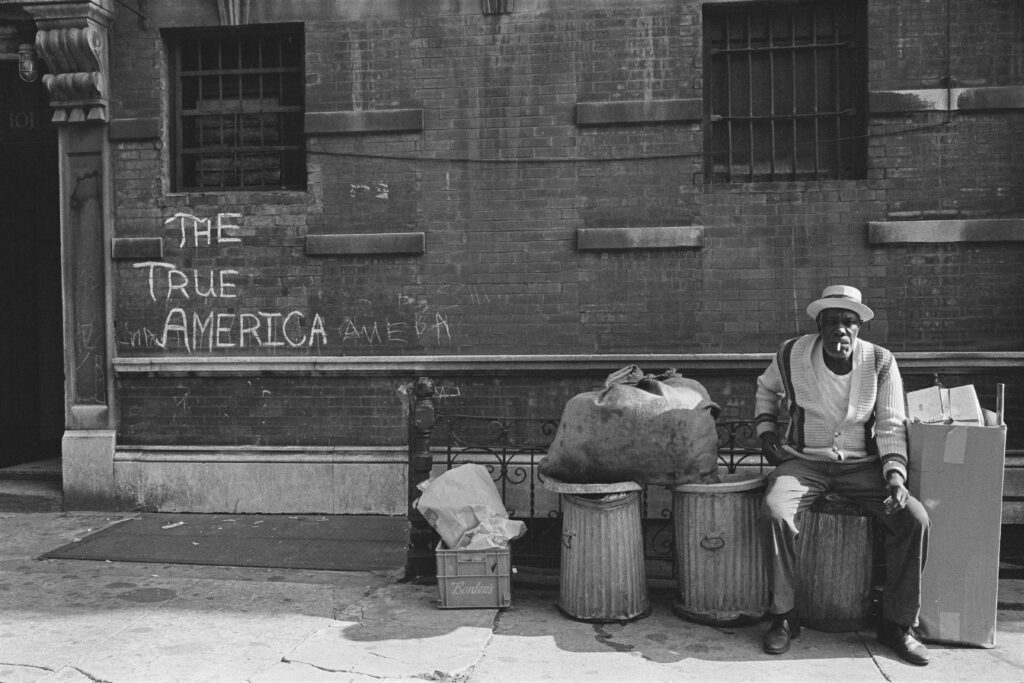
Take a moment to think back to all the hard work you’ve done in your life. Picture all the blood, sweat and tears that you must’ve put in to get to where you are today. Great, now imagine a big chunk of your work being lost as though it never happened; no proof, simply gone without a trace. That feeling in the pit of your stomach is a symbol of what Ernest Cole experienced when 60,000 of his negatives from photos taken over the years disappeared. At least, that’s what he died thinking. Let’s take a look at what Raoul Peck has brought to us in his latest documentary.

Lost and Found is a documentary written and directed by Raoul Peck that tells the life of Cole through a series of the photographer’s photos, narrated by Lakeith Stanfield. He reintroduces us to the South African who captured the tragic events of apartheid through his lens. In addition to pictures, Peck paints Cole’s life to the viewer through a medley of letters, snippets from interviews, and a sit-down with his nephew, Leslie Matlaisane. Stanfield delivers in his ability to convey the hurt and pain in his voice to mirror Cole’s words in his letters, from describing his feelings of being homesick and depressed to the utter sadness he experienced when his passport was denied and he was not allowed to return home.
In 1967, after nearly 10 years piecing it together, Cole released a book that would change his life: House of Bondage. He chronicled the graphic imagery of apartheid, allowing the rest of the world to see it for the first time. The photographer was saddened to learn his book was banned in South Africa, noting it broke him that his own people couldn’t see his work. Raoul Peck included a lot of the vivid imagery in the documentary, including the gruesome Sharpville massacre carried out by the regime that claimed the lives of 69 and injured 180 in March 1960. The celebrated director has a track record of telling Black stories, as he did previously with I Am Not Your Negro, Silver Dollar Road, The Young Karl Marx, and many others.
Some of the lighter bits from Lost and Found feature subjects in candid photos who don’t seem to mind being photographed. They appear cheerful and full of joy as Cole perfectly captures people truly living in the ’70s. Raoul Peck even goes as far as including interracial and gay couples, posing the fact that sights like this were illegal back in South Africa. Stanfield narrates that Black men holding hands in Johannesburg was seen as a sign of deep friendship.
One thing that stands true through the entire documentary is Cole’s hope to one day see a free South Africa, and it’s tragic how close he came to just that. At the age of 49, he grew ill and was hospitalized with his mother by his side. He passed away shortly after due to pancreatic cancer, and his mother insisted he be buried back home. As a result, Cole was cremated, and she flew back with his ashes on her lap. Two weeks later, Nelson Mandela was free from jail and apartheid came to an end. This portion lost its tone as it yanks the audience away from the feeling that we were listening to Cole himself. As he is in the hospital, Stanfield is detailing moments down to his last breath. But he then continues speaking on events taking place after his death. That was an instant jolt into reality and truly worked against the storytelling technique Peck spent the entire first hour of the film creating.
Lost and Found leaves you feeling sorry for the South African photographer; he spent all his adult life capturing the brutality of what was taking place around him and then vanished. You’re left feeling that he deserved better, a longer lasting legacy, for he was a pioneer in his field who deserved his flowers while he was alive. In 2017, Matlaisane received an email stating an urgent matter needed to be discussed and arranged travel to retrieve artifacts known to belong to Cole. Peck’s inclusion of the footage showcasing what took place in Sweden was a beautiful addition. We see Cole’s nephew and his son cutting the zip ties on three boxes to reveal 60,000 negatives that were presumed lost. Apparently, someone had deposited them into the Swedish bank; however, there is no record of who or when. As you relish in the moment, you can’t help but be flooded with hundreds of questions. Who paid for the deposit boxes all these years? How does a massive bank not have any record of how these came into possession?
The most important part is Cole’s work was not lost and it was shared with the world, as he always wanted. While he is gone, it’s beautiful to know his work lives on despite the mystery surrounding it. At the time of the documentary, the Hasselblad bank in Sweden still possessed 504 prints worth thousands of dollars each, and were requesting the family prove ownership to collect them. Earlier this year, in May 2024, the Hasselblad Foundation posted on their social media, “We’re pleased to announce a significant milestone in our journey with Ernest Cole’s iconic works! On May 7, we proudly handed over 496 vintage prints to Leslie Matlaisane from the Ernest Cole Family Trust, marking a great occasion in preserving Cole’s legacy.” Peck should be commended for bringing Cole’s life back to the forefront, thus applying pressure for the prints to be returned.
From his desire for the end of apartheid to wishing his people could see his work, at the end, Cole got everything he wanted. Rest easy, king.









